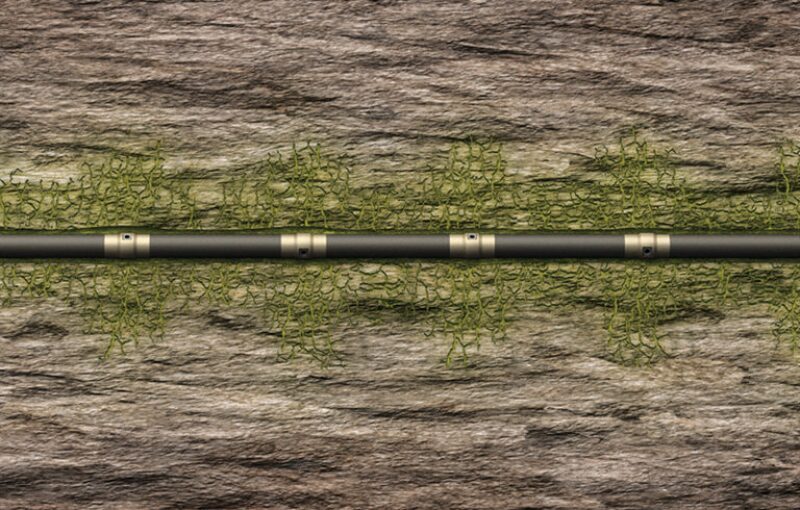Matrix acidizing is a method of stimulating carbonate reservoirs for oil and gas production. Unlike acid fracturing, matrix acidizing creates conductive flow channels, also known as wormholes, which possess much higher conductivity than the reservoir rock. These conductive channels transport reservoir fluids from within the formation matrix directly into the wellbore overcoming both low permeability and near wellbore damage.
In matrix acidizing of moderate to prolific carbonate reservoirs, efficient acid placement is a major challenge, as acid tends to flow preferentially toward intervals with the highest permeability. It can result in overstimulation of these areas, leaving the low-permeability intervals untreated.
A significant percentage of matrix acidizing treatments do not meet expectations because of an improper job design and acid placement. In some cases, an increase in water production occurs after a stimulation job as a result of preferential stimulation of high-permeability sections associated with water.
Case Study: Khuff Carbonate
Khuff is a carbonate formation deposited on a shallow continental shelf in the Ghawar structure of eastern Saudi Arabia. It is divided into four intervals, A to D, with production mainly coming from the two gas-bearing layers: Khuff-B, a tight dolomite, and Khuff-C, a more prolific calcite.
Since its initial appraisal in the late 1970s, the majority of Khuff’s development activities have focused on the Permian Khuff-C formation. Extensive heterogeneity in stress, reservoir quality, and reservoir fluids throughout the field, combined with the deep and hot nature of the reservoir, makes effective stimulation of all layers a challenging task. All Khuff gas-producing wells require acid stimulation either by acid fracturing or matrix acidizing to obtain high production rates and sufficient flowing wellhead pressure to be tied into production facilities.
Until mid-2011, the majority of Khuff horizontal gas wells were drilled toward the maximum horizontal in-situ stress (σmax) to enhance wellbore stability and achieve the best penetration rates. However, when multistage fracture stimulation is desired and the well is drilled in the σmax direction, the fractures will grow longitudinally (parallel to the wellbore) and cause potential risk of overlapping with subsequent fractures. Therefore, initiation of the second and third fractures becomes a challenge because of possible pressure communication across the first induced fracture.
To avoid fracture overlapping, a well slated for multistage fracturing should be drilled toward the minimum horizontal in-situ stress (σmin), which allows transverse fracture growth (perpendicular to the wellbore). Drilling wells toward σmin often poses challenges, such as wellbore instability and differential sticking, but the improved long-term productivity justifies the strategy.
Limited-Entry Matrix Acidizing
In the more prolific zones of the Khuff-C formation, there are wells that could only be drilled in the σmax direction, because of proximity to other boreholes and the resulting danger of the wells colliding with each other. Acid fracturing of these wells could have led to the creation of a single linear fracture that would propagate parallel to the wellbore and possibly cause pressure communication with adjacent stages across the rock matrix. To prevent this, an innovative approach was required that used limited entry to enhance acid distribution to achieve a deep, high-rate matrix acidizing treatment.
The openhole (OH) multistage limited-entry matrix acidizing (LEMA) completion system is a successful technology that has opened access to several major carbonate reservoirs. In this system, stages are created by isolating sections of the wellbore using OH mechanical packers and multiple shear-activated stimulation jets, which are spaced out in the sections of interest (Fig. 1).

Unlike standard single entry-point OH completions that are typically designed with uniform stage spacing, multiple jet nozzles are adjusted and placed according to reservoir characteristics, thus enabling controlled injection and leakoff for distributed flow of the acid into the entire length of each stage. The designed treatment is thereby effectively placed at an optimal rate and pressure within each stage, resulting in the maximized development and complexity of wormholes throughout the stimulated reservoir length.
Results
The candidate well in the Khuff-C formation, which was drilled parallel to σmax, was chosen to test whether the OH LEMA system could increase production. After a thorough analysis of the geomechanical properties of the formation and the OH log data, a three-stage LEMA system was designed with a single port for the first stage and six stimulation jets for each of the second and third stages.
The system was successfully deployed to the target depth in the 1635‑m (5,367-ft) lateral, and acid was pumped below the formation fracture pressure according to the treatment design and pumping schedule. The opening of each interval and the pumping of the acid treatment went as per design without operational problems.

Production from the OH LEMA-completed well was compared with three offset wells: an OH dual lateral well that was completed using conventional coiled-tubing matrix acidizing (Well 1), and cased-hole deviated and vertical wells that were both completed with acid fracturing (Wells 2 and 3, respectively). As shown in Fig. 2, the OH LEMA-completed well had the highest production of the four wells.
This study shows that for prolific carbonate formations, high-rate, OH, multistage limited-entry matrix acidizing is an enabling technology that provides superior placement of acid treatments and results in improved production profiles, compared with conventional coiled-tubing matrix acidizing and cased-hole acid fracturing.
This article was based on paper SPE 166527 presented at the SPE Annual Technical Conference and Exhibition in New Orleans, 30 September–2 October 2013.

